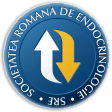
- Login
- Register
- Home/Current Issue
- About the journal
- Editorial board
- Online submission
- Instructions for authors
- Subscriptions
- Foundation Acta Endocrinologica
- Archive
- Contact
 Romanian Academy
Romanian Academy
 The Publishing House of the Romanian Academy
The Publishing House of the Romanian Academy

ACTA ENDOCRINOLOGICA (BUC)
The International Journal of Romanian Society of Endocrinology / Registered in 1938in Web of Science Master Journal List
Acta Endocrinologica(Bucharest) is live in PubMed Central
Journal Impact Factor - click here.

-
General Endocrinology
Hu GM, Shen G M, Xu H
Cimicifuga racemosa alters behavior and PVN c-fos expression in ovariectomized rats subjected to the forced swimming testActa Endo (Buc) 2012 8(4): 529-537 doi: 10.4183/aeb.2012.529
AbstractCimicifuga racemosa (CR) is widely used in the treatment of menopausal symptoms, including hormone-related affective disorders in women. Mechanistic studies suggest that unlike hormone-replacement therapy, CR does not stimulate cancerous growth.\r\nObjective: to evaluate CR safety and the antidepressant-like effects compared to estrogen treatment.\r\nMaterials and Methods: we used the forced swimming test (FST) to address the hypotheses that CR alters behavior of ovariectomized (OVX) rats in the FST and the FST-induced expression of c-fos in the rat paraventricular nucleus (PVN). After the FST, all animals were perfused, and the brains were processed for c-fos immunocytochemistry; the plasma was processed for radioimmunoassay of plasma estrogen levels.\r\nResults: OVX group animals spent significantly (P<0.05) more time struggling than CR and E2 groups. The CR and E2 groups animals spent little time in struggle time decreased. CR and E2 groups animals spent significantly (P<0.05) more time swimming than OVX group animals.\r\nConclusion: CR was demonstrated to have antidepressant effect, and establishing the safety symptoms in women in whom hormone-replacement therapy is contraindicated. -
Case Series
Parksook WW, Panumatrassamee K, Phupong V, Snabboon T
Management Strategies for Normotensive Pheochromocytoma in PregnancyActa Endo (Buc) 2024 20(4): 533-537 doi: 10.4183/aeb.2024.533
AbstractBackground. Managing pheochromocytoma during pregnancy presents significant challenges due to the absence of well-established guidelines. Early detection during prenatal care, together with timely medical and surgical interventions, is crucial for achieving favorable maternal and fetal outcomes. Case presentation. This report presents the case of a 35-year-old nulliparous woman with bilateral pheochromocytoma who became pregnant between the first and second stages of adrenalectomy. Preoperative management included α-adrenergic blockade and hydration, which was successfully implemented despite the patient being normotensive. The patient underwent a corticalsparing tumor resection during the second trimester without complications and subsequently delivered a healthy fullterm infant through normal labor. Conclusion. This case demonstrates that preoperative α-adrenergic blockade remains the recommended approach for managing pheochromocytoma during pregnancy, even in normotensive patients. Additionally, laparoscopic cortical-sparing adrenalectomy appears to be an effective surgical option for minimizing the risk of long-term adrenal insufficiency in cases of bilateral lesions. -
Case Series
Nguyen K, Chen X, Hughes T, Hofflich H, Woods GN, McCowen KC
Surprisingly Few Women with Severe Osteoporosis by Bone Densitometry Undergo Workup for Secondary Causes - a Retrospective EvaluationActa Endo (Buc) 2021 17(4): 537-542 doi: 10.4183/aeb.2021.537
AbstractWe describe clinical features of women with extremely low bone density, and investigate secondary causes of osteoporosis. Our hypothesis was that this population would be enriched in identifiable causes of osteoporosis. We performed a retrospective review of medical records of all women seen at our university over 4 years with T-score on bone densitometry at/below -4 at any site. Historical and fracture details were abstracted. We considered a thorough work up to include Vitamin D, PTH, CBC, chemistry panel, cortisol, transglutaminase, myeloma screen, tryptase and 24-hour urine calcium. Results. 137 women were identified with T-score at/below -4. Percent identified as Asian was 26% (higher than local prevalence of 8%). Average BMI was 21.6 kg/ m2. Clearly identifiable causes of osteoporosis were noted in 57% (inflammatory disorder, glucocorticoid or antacid exposure, prolonged immobilization and alcoholism were most prevalent). Of the remainder, full work up was performed only in 8%. Endocrine consultation and white race predicted thoroughness of secondary work-up. Conclusion. Fragility fractures, leanness and Asian race were common in women with very low T-score. However, few new causes were identified. Underlying etiology was either immediately evident or inadequately studied, especially in minorities. -
Notes & Comments
Hussein S. AL-Janabi AA
Role of Type 2 Diabetes and Body Mass in Progressive Osteopenia and OsteoporosisActa Endo (Buc) 2024 20(4): 544-550 doi: 10.4183/aeb.2024.544
AbstractContext. Osteopenia and osteoporosis are medical terms commonly used for a defect in compact bone. Diabetes has a complex effect on the degree of bone mineral density (BMD). Objective. Evaluation of the effect of type 2 diabetes mellitus (T2DM) on osteopenia and osteoporosis concerning body mass is the aim of this study. Design. A case-control study, including 400 patients with type 2 diabetes mellitus (T2DM) and 200 healthy individuals, was designed. Subjects and Methods. BMD T-score measured by dual X-ray absorptiometry (DXA) was used as an indicator for osteopenia and osteoporosis, while body mass index (BMI) was used for determining obesity. Results. The BMD value of osteoporosis was observed in most females of both groups, compared to males with osteopenia with no supported by statistical analysis. The BMI value indicated that obese individuals are more likely to develop osteopenia in both groups, although there were no significant differences. Subjects aged 40 and over showed high osteopenia, which is associated with obesity. Conclusion. There is no significant effect of gender, diabetes, or obesity on the BMD. Osteopenia is more prevalent in age groups over 40. The obese women remain at risk of osteoporosis and men are at risk of osteopenia. -
Images in Endocrinology
Yu J, Qin C, Huang S, Ye X, Meng N
Treatment of Giant Juvenile Breast Fibroadenoma by Single Hole Breast Endoscopy: a Case ReportActa Endo (Buc) 2021 17(4): 552-553 doi: 10.4183/aeb.2021.552
Abstract- -
Endocrine Care
Wu YC, Huang CN, Chen YJ, Kornelius E, Lu YL, Lin YT, Li CL, Yang YS
Application of Self-Regulatory Behavioral Management in Postprandial Self-Blood Glucose Monitoring for Noninsulin Treated Type 2 Diabetic PatientsActa Endo (Buc) 2014 10(4): 629-639 doi: 10.4183/aeb.2014.629
AbstractAim. The purpose of this study is to investigate the effect of self-monitoring of blood glucose (SMBG) on glycemic control in insulin-naive type 2 diabetic patients comparing SMBG plus self-regulatory behavioral education, and SMBG plus individual education. Methods. Participants with glycated hemoglobin A1C (HbA1C) of 7.5-12% were enrolled in this 24-week, prospective study. Forty-two and forty participants received SMBG plus selfregulatory behavioral education, and SMBG plus individual education, respectively. The glycemic and behavioral attitudes outcomes were evaluated. Results. The A1C level decreased in both groups, from 9.41± 1.7% to 7.84± 0.83% in the SMBG plus self-regulatory behavioral education and 9.62 ±1.08% to 9.09± 1.1% in the SMBG plus individual education. However, the postprandial glucose (PPG) level sustained more significant decreases from 277.1 ±80.1 to 175.7 ±53.9 mg/dL in the SMBG plus self-regulatory behavioral education, and from 261.2 ±80.5 to 221.6 ±41.2 mg/dL in the SMBG plus individual education. The frequency of PPG monitoring increased from 0.1 ± 0.81 to 3.46 ± 2.81 times/week in SMBG plus self-regulatory behavioral education, whereas it increased from 0.13± 0.78 to 1.01± 0.89 in SMBG plus individual education. The amount of carbohydrates consumed per day decreased and the amount of physical activity performed per week increased significantly in self-regulatory behavioral education group. Conclusions. The use of this model of SMBG plus self-regulatory behavior education appears to have resulted in superior improvements in glycemic control and behavioral outcomes compared with those achieved by SMBG plus individual education.